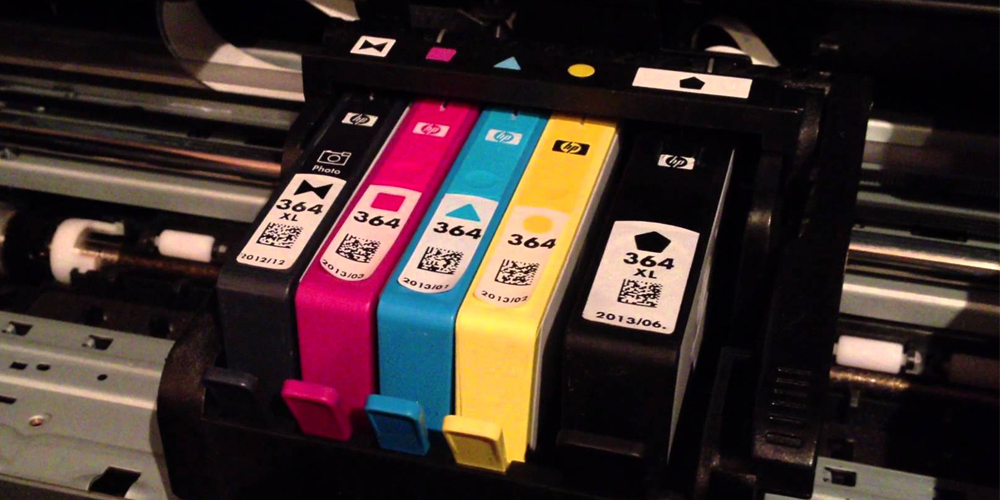How to Connect HP Printer to Wi-Fi Easily (Step-by-Step Guide)
December 16 2025
With dependable printers to suit different demands, HP has made a name for itself in the printing industry. The ink is an essential part of any printing process. This comprehensive set up examines every aspect of HP printer ink, including varieties, typical problems, troubleshooting advice, and strategies for maximizing ink consumption.

Original HP ink cartridges are made especially for HP devices. They guarantee strength, best performance, and prints of the highest quality. Every cartridge is designed to satisfy the particular requirements of HP printers, ensuring a flawless printing experience.
Produced by third-party manufacturers, compatible ink cartridges are meant to be worked with HP printers. Although their prices may be lower, consumers should be cautious because the quality could differ. Sometimes using compatible ink can make the printer's warranty worthless.
Original Equipment Manufacturer (OEM) cartridges that have been recycled, cleaned, refilled, and functionally tested are called remanufactured ink cartridges. In addition to being more affordable than original cartridges, they provide a more environmentally friendly solution. Call +1 (800) 673-8163, the HP printer ink customer care phone number.
1. Ink Cartridge Compatibility: When using ink cartridges that aren't meant for their HP printer model, users may run into problems. Consult the printer's guide or the HP website for a list of compatible cartridges to make sure they work.
2. Ink Smudging or Fading: Using low-quality or expired ink cartridges might cause smudged or faded prints. To get the best results, make sure the ink is of the specified quality and is within its expiration date.
3. Printer Not Identifying Cartridge: Sometimes, a newly installed cartridge might not be recognized by the printer. A broken cartridge or incorrect installation may be at responsible for this. Try replacing the cartridge with a fresh one or carefully reinstall it, making sure it breaks into place.
4. Ink Cartridge Errors: When using ink cartridges, users may get error messages like "Ink Cartridge Problem" or "Cartridge Missing." There are several possible causes of these problems, such as defective cartridges or incorrect cartridge installation.
1. Verify the installation of the cartridge: Make sure the ink cartridges have been installed correctly. For correct installation, refer to the printer manual's instructions. If unsure, take the cartridges out and put them back in, making sure they click firmly. Call
2. Clean Print Heads: Print heads may clog with dried ink over time, resulting in problems with print quality. A feature for cleaning print heads is integrated into the majority of HP printers. Use this tool on a regular basis to keep your print quality at its best.
3. Use genuine HP Ink: Using genuine HP printer ink cartridges is suggested to avoid problems with compatibility and quality. Genuine ink cartridges have been designed to work perfectly with HP printers, guaranteeing reliable and excellent print quality.
4. Update Printer Firmware: Issues with ink can be caused by outdated printer firmware. To fix any possible problems, update the firmware on your printer by checking for updates on the HP website.
5. Run Print Quality Diagnostics: To evaluate print quality, many HP printers include built-in diagnostic tools. To find and fix any problems influencing the quality of your printing, run these diagnostics.
1. Use Draft Mode for Non-Essential Prints: Use the draft mode for internal papers and drafts. For papers that don't require high-quality printing, this setting saves ink usage.
2. Choose the Appropriate Print Quality Settings: Depending on the kind of document, modify the print quality settings. Standard settings work well for most papers, but high-quality settings work well for photos.
3. Print in Grayscale: Documents should be printed in grayscale when color isn't necessary. As a result, less color ink is used, prolonging the life of color cartridges.
4. Update Printer Software: Make sure your HP printer ink is up to date on a regular basis. Updated software might provide improvements to maximize ink consumption and boost overall productivity.
5. Choose the Correct Paper Type: Making sure the printer is configured for the appropriate paper type guarantees that the correct amount of ink is dispensed. This helps to ensure efficient ink usage by preventing over-inking.
Maintaining the best possible printing performance requires an understanding of the nuances of HP printer ink. Through appropriate ink selection, troubleshooting of frequent problems, and ink consumption optimization, users can guarantee a seamless and effective printing experience.
2025 Printer Help 247 - All Rights Reserved.